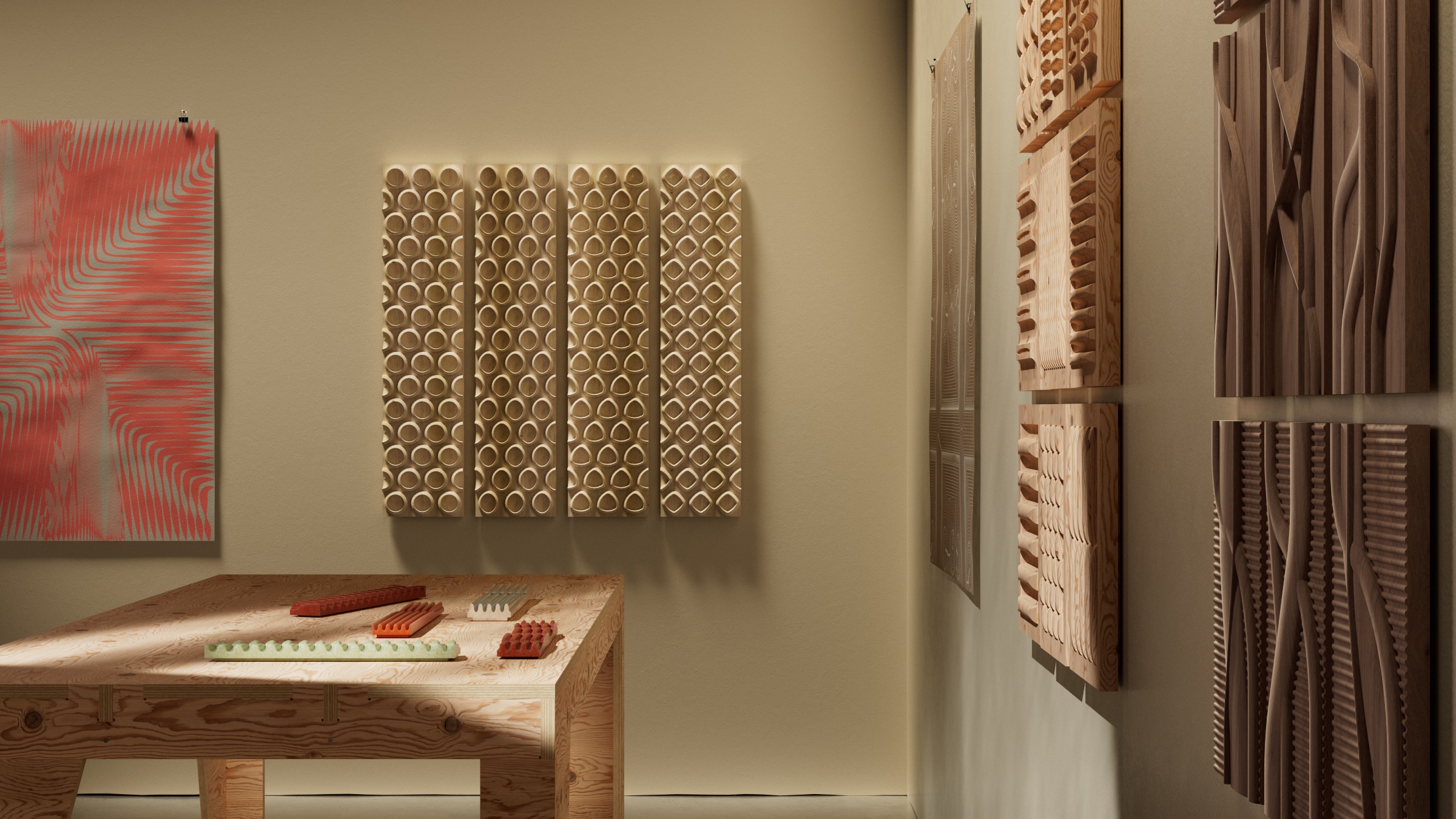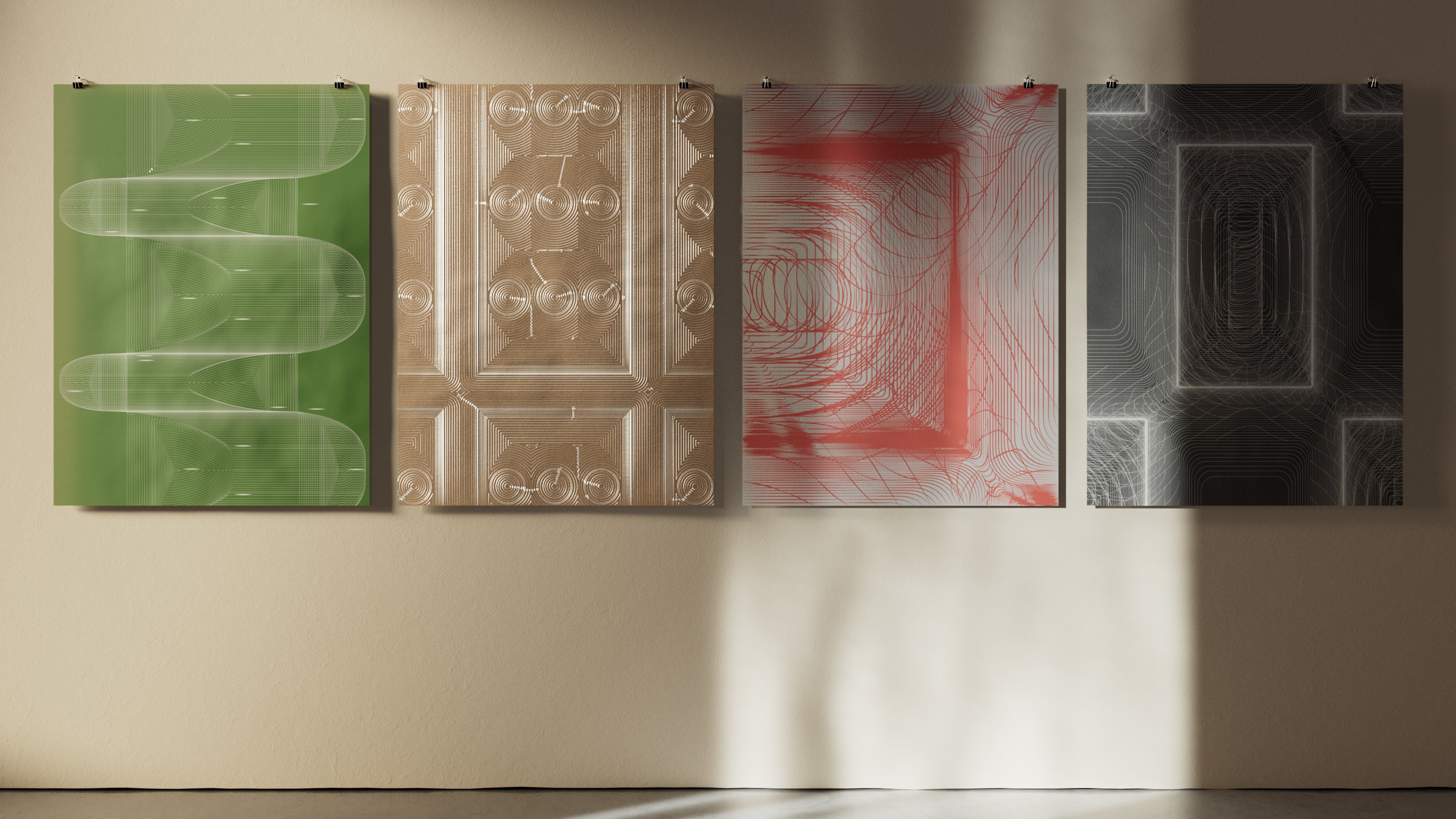Toolpath Panels
Digital fabrication tools are most commonly engaged as agents of output, after — and in service to — design. This project considers the CNC machine’s capacity to extend beyond mere output. To explore this idea, we applied parametrically-controlled contouring toolpath patterns to a collection of reclaimed wood boards in various species and sizes.
Through this process, we’ve begun to more fully examine relationships between hardware, software, and material. Each panel series below choreographs the operations and labors of the machine to achieve repetition and precision towards new territory.
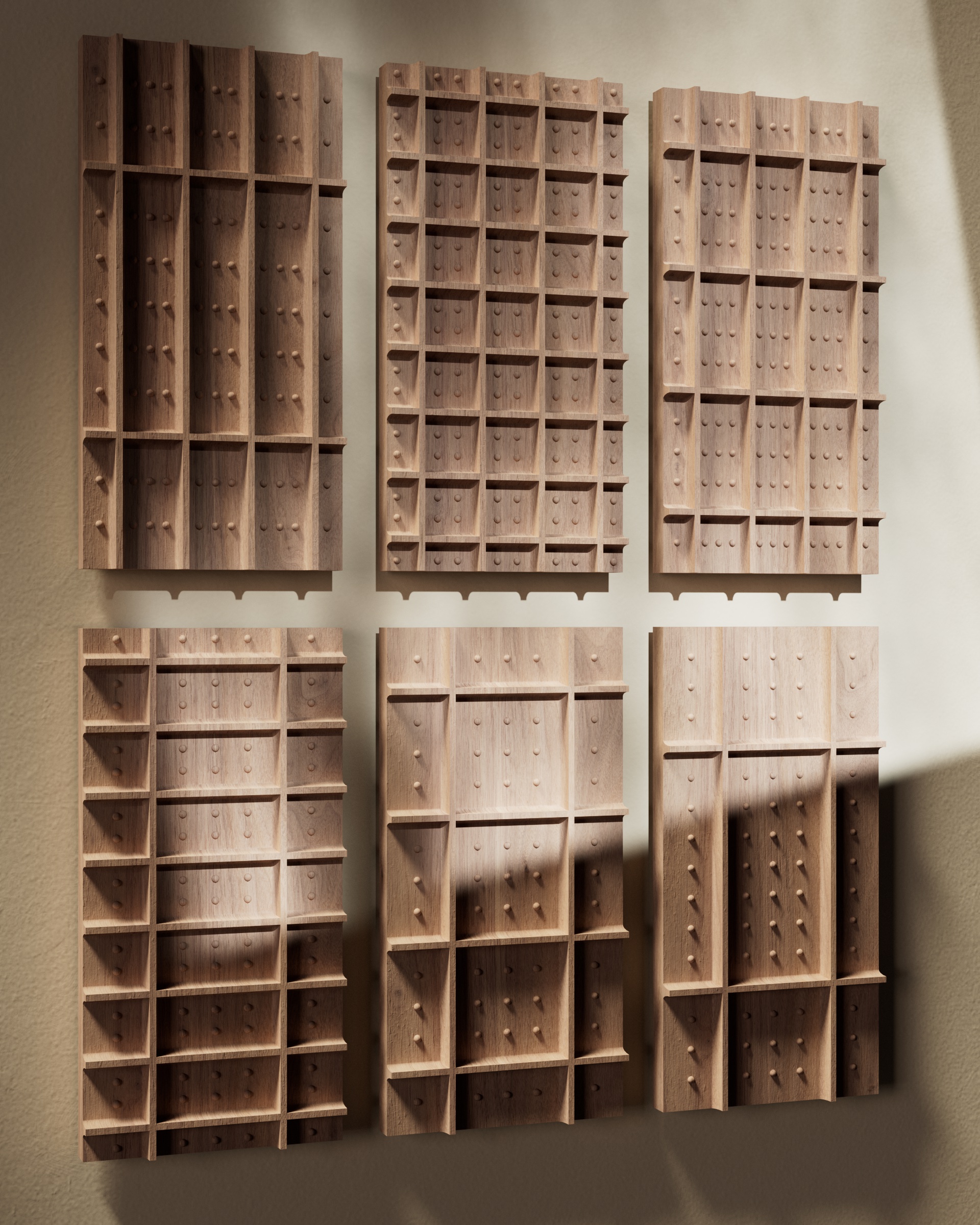

We developed parametrically controlled repetetive patterns around conic surfaces and ellipses, which have a compatibility with the shape of the ballnose endmill. For each group of boards that we had on hand, we applied parametric versions of a pattern. Thus far, we've produced five panel series that aim to celebrate the labor of the machine.
Often, the quality, complexity, and tactility admired in the most rarified objects comes from laborious handwork. Each panel series shown here is a crystallization of relationships: between human ideas and perception, physics, nature and machines.
Collectively, they ask what might be the rarified object that comes from laborious machinework? Where does this integrated approach of design and machining go from here? Could it be applied to the production of everyday objects, making the the exclusive accessible to all?
1. AM Series (above)
We've long admired the power of Agnes Martin's grid paintings, which used controlled grids and dots to achieve vast depth and complexity. This series of mahogany panels explores this principle, deepening picture plane to achieve light, depth and shadow.
2. Loom Series
This series explores a particular condition where the digital model produces a predicament for the CNC machine. At moments, what the machine produces differs from the digital model, from which toolpaths are generated. We are curious about machine-produced elegance and intelligence from which we might learn.
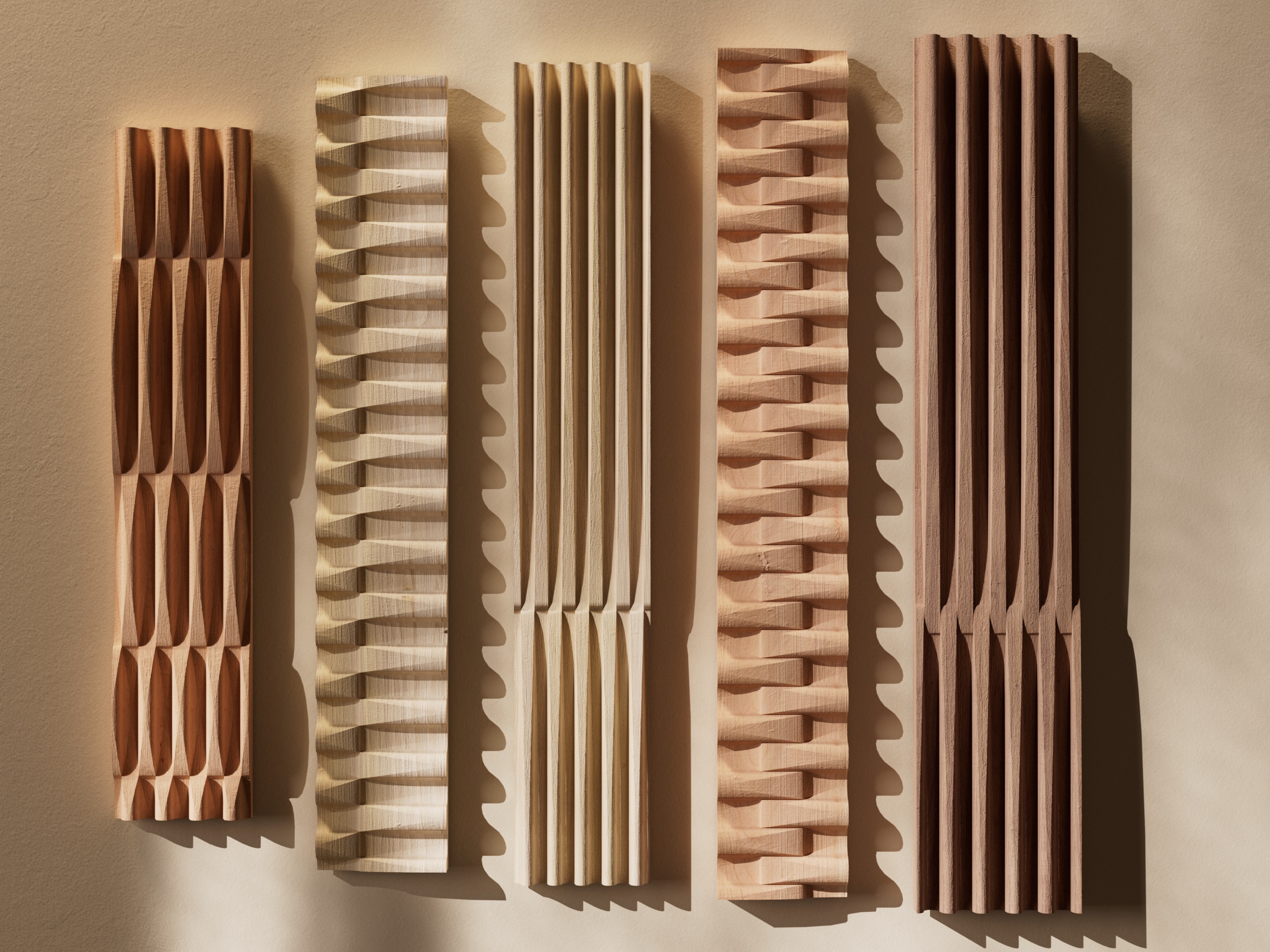

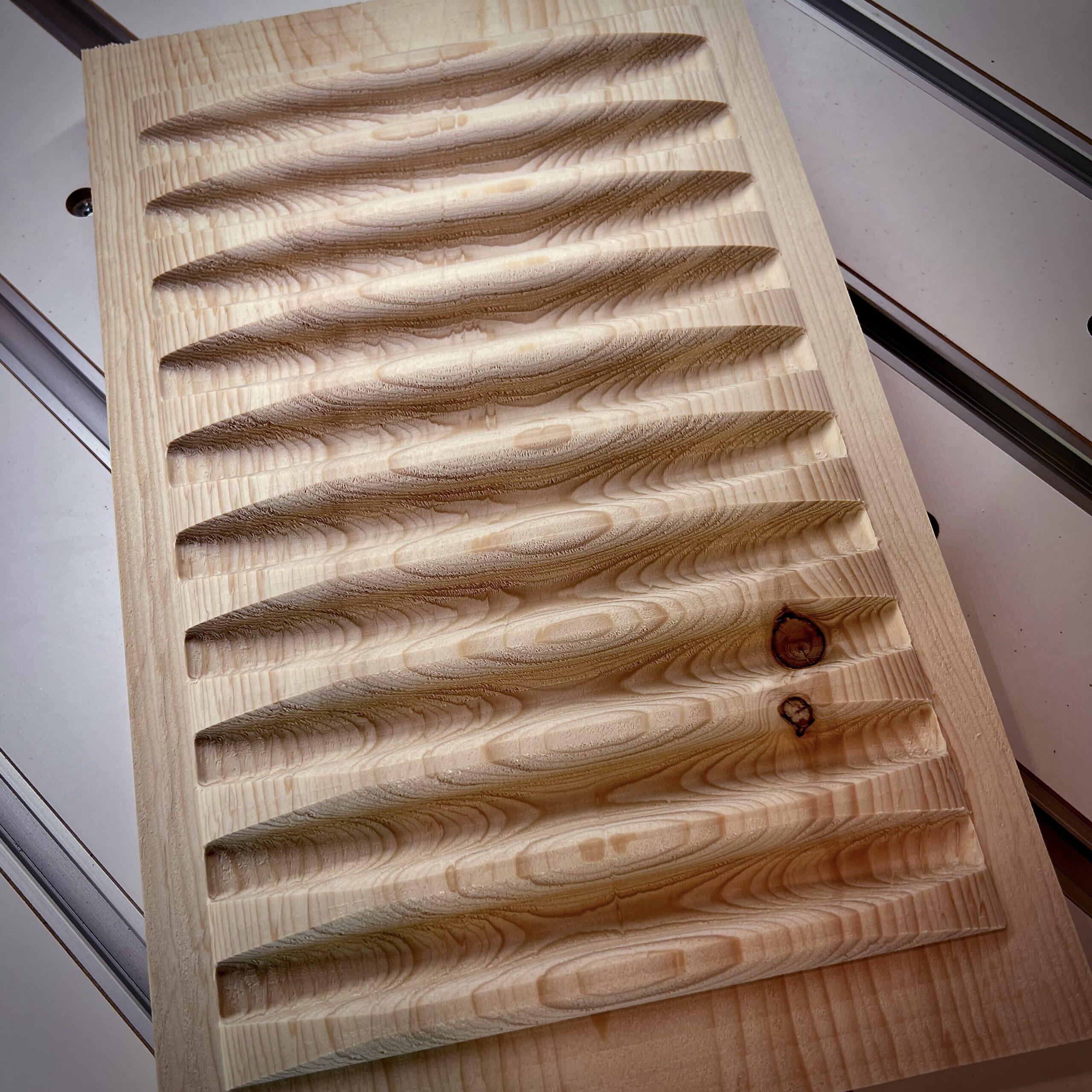
Fabrication Details
Image 1/2: Elliptical Series after steep & shallow finishing pass and as finished object. Image 3/4: Ellpitical Panel after adaptive clearing and after steep & shallow finishing pass. Image 5/6: AM Series after adaptive clearing and after steep & shallow finishing pass.
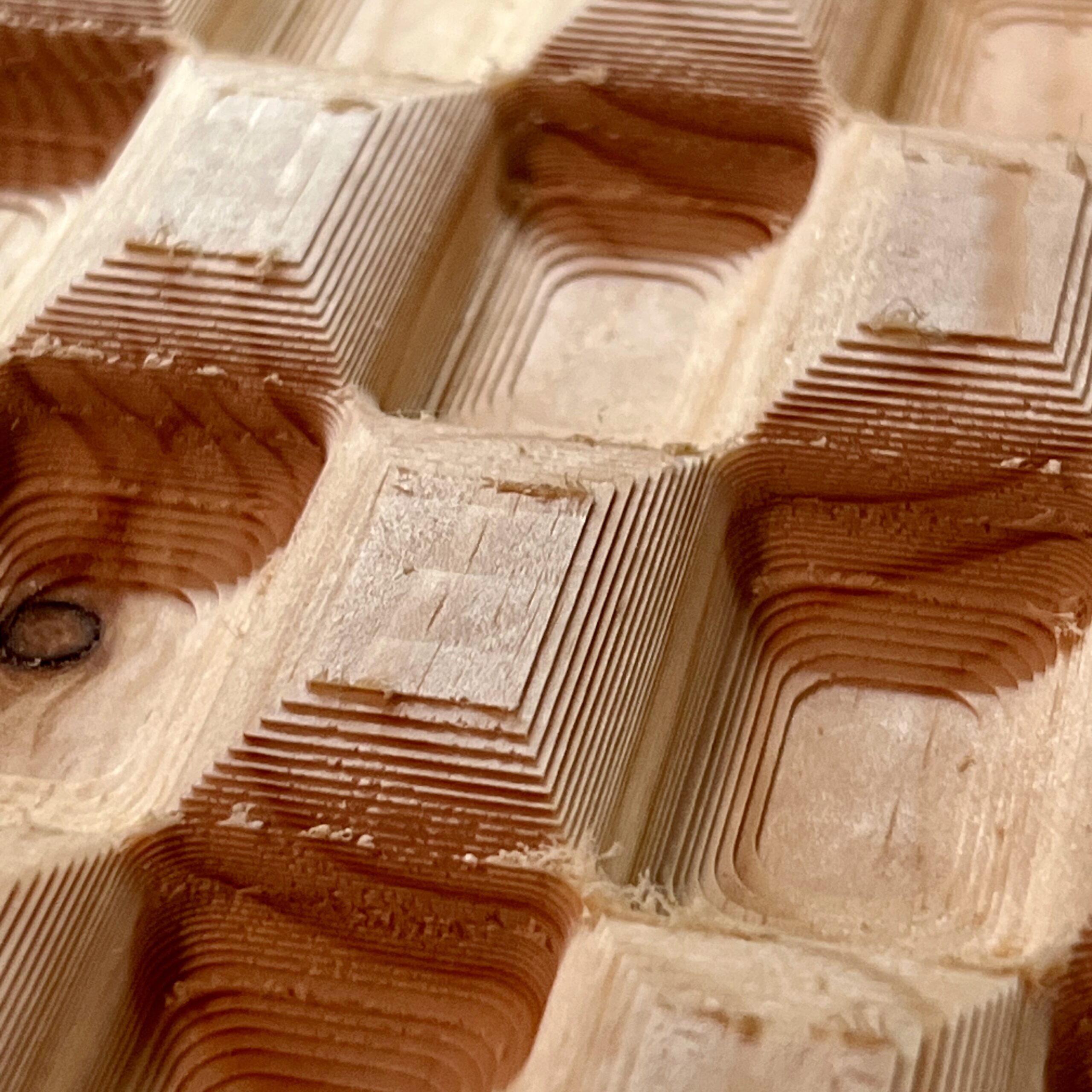
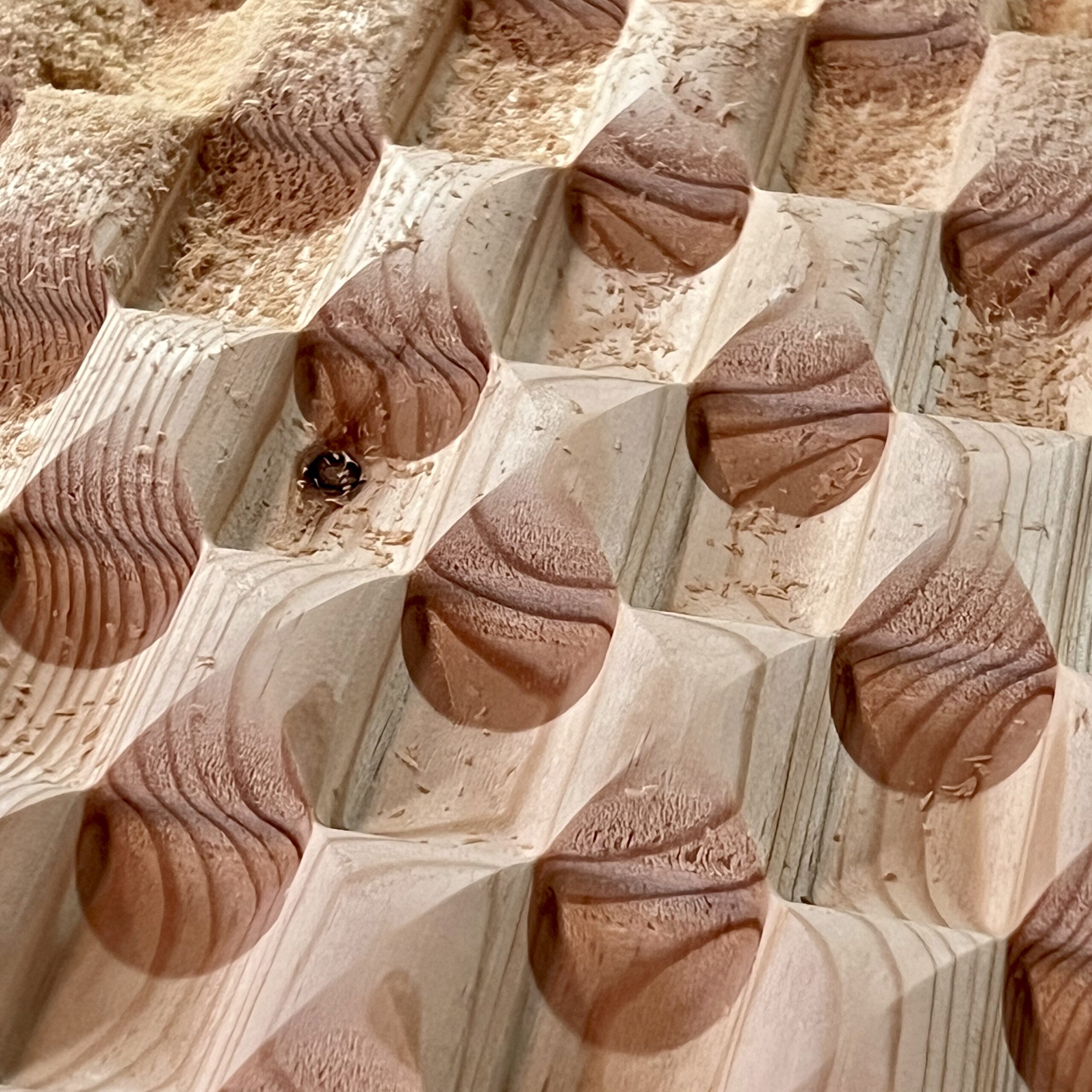
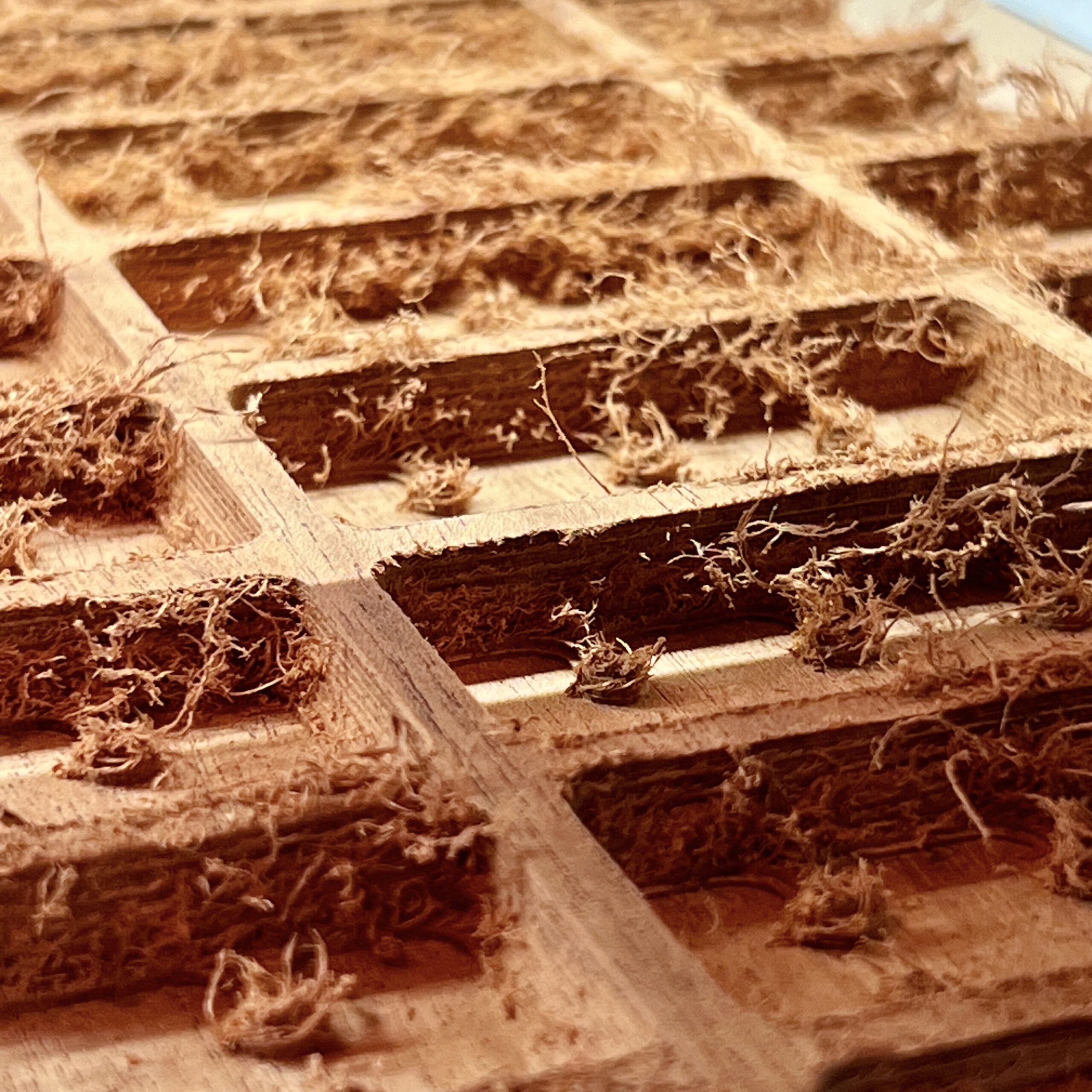
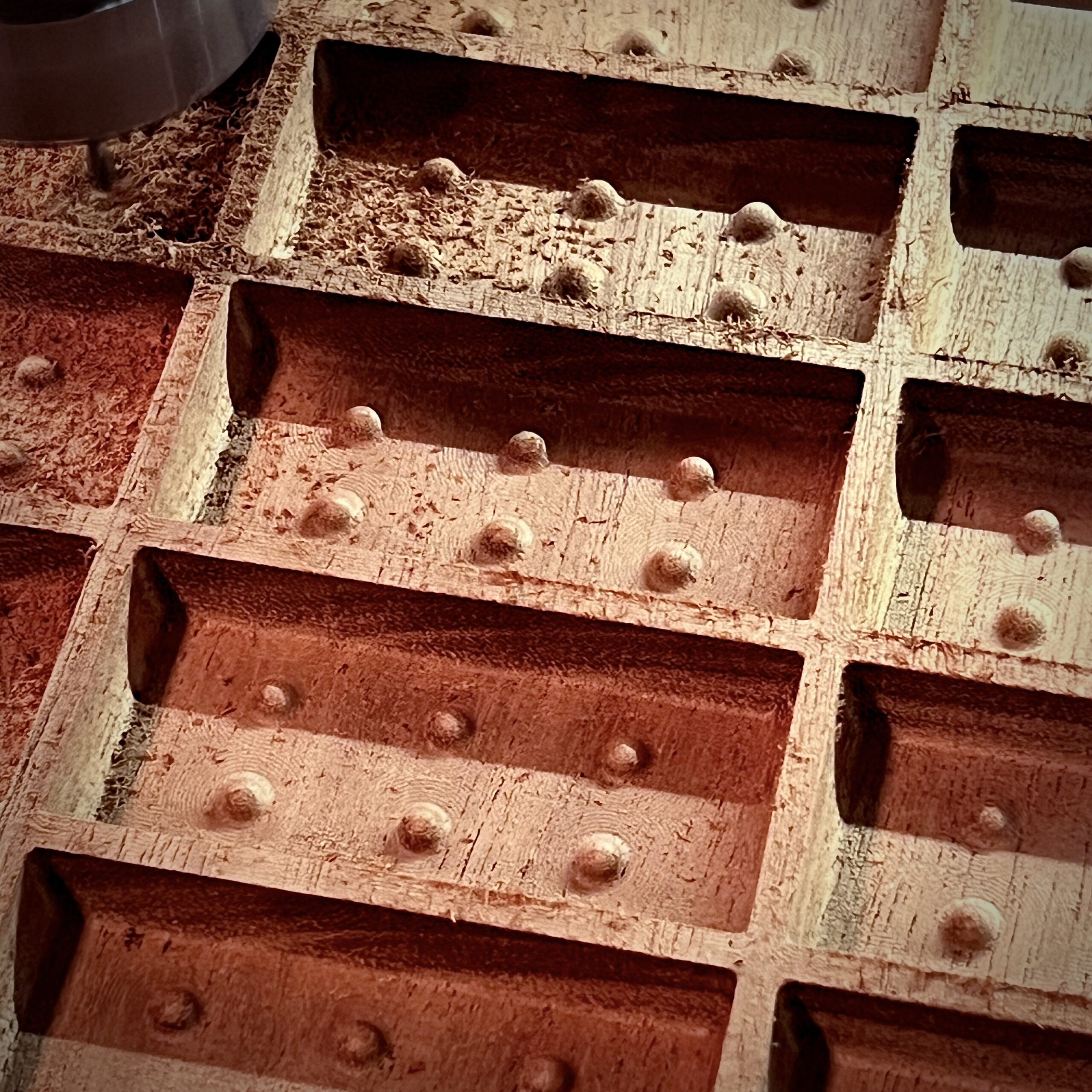
3. Elliptical Series
These parametric patterns of rows and columns seamlessly transition from peak to trough. The ellipse series seeks a finely machined finish with the smoothest transitions from concave to convex, resulting in deep light and shadow.

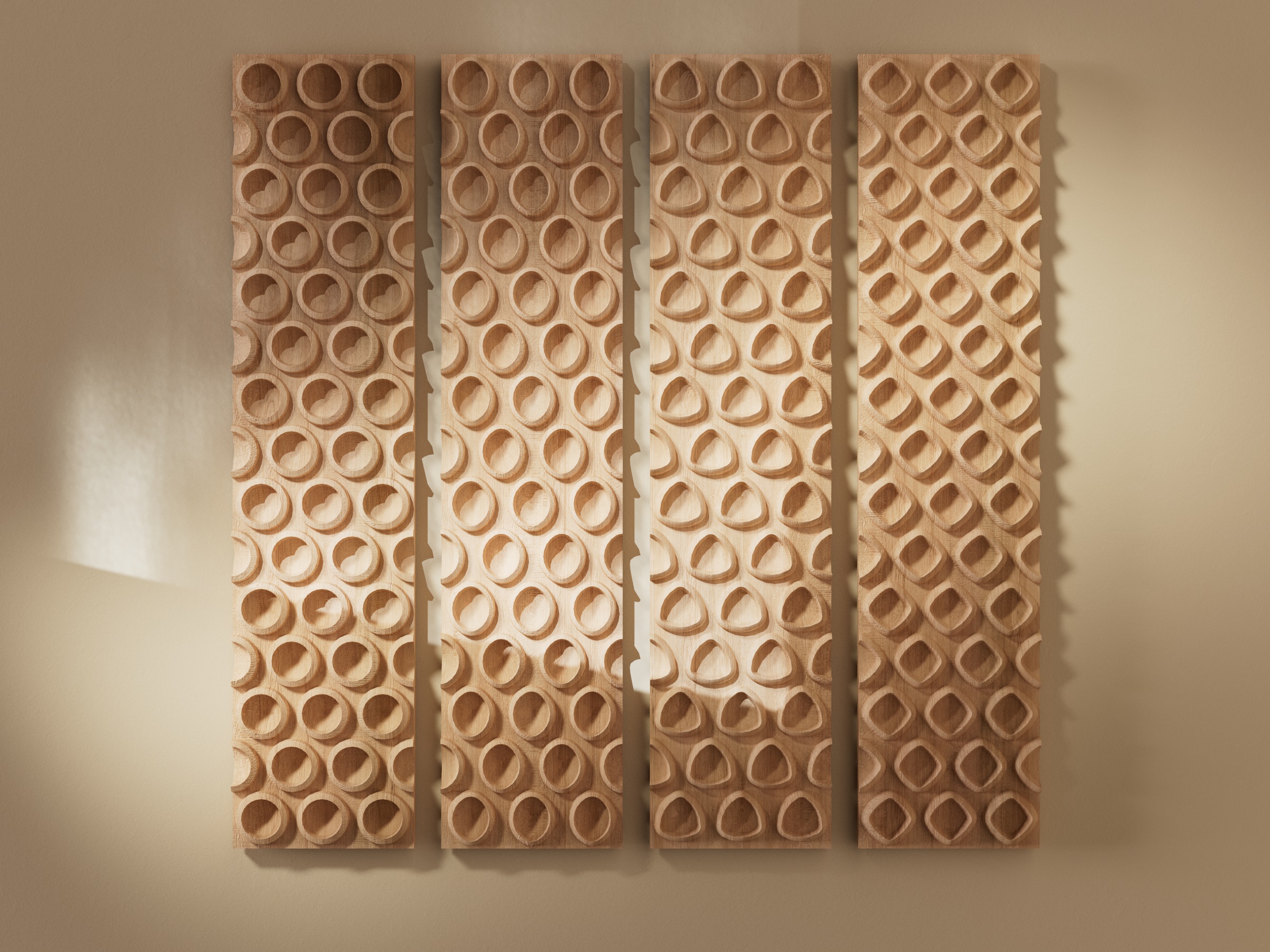
4. Conic Series
Conic surfaces ensure tangency in three dimensions; while providing a linear z slope that enables one to directly understand the implications of step-over and step-down decisions. A ‘cleft’ emerges at the intersection of adjacent conic surfaces of a particular slope — providing a feature that requires hi-fi milling.
Order of Operations
Image 1/2: Parametric sketches for Conic Series and Paths Series. Image 3/4: Fusion360 toolpath panel simulations for Elliptical Series and Conic Series. Image 5/6: UCCNC screengrabs of milling in progress of the Conic Series and AM Series.

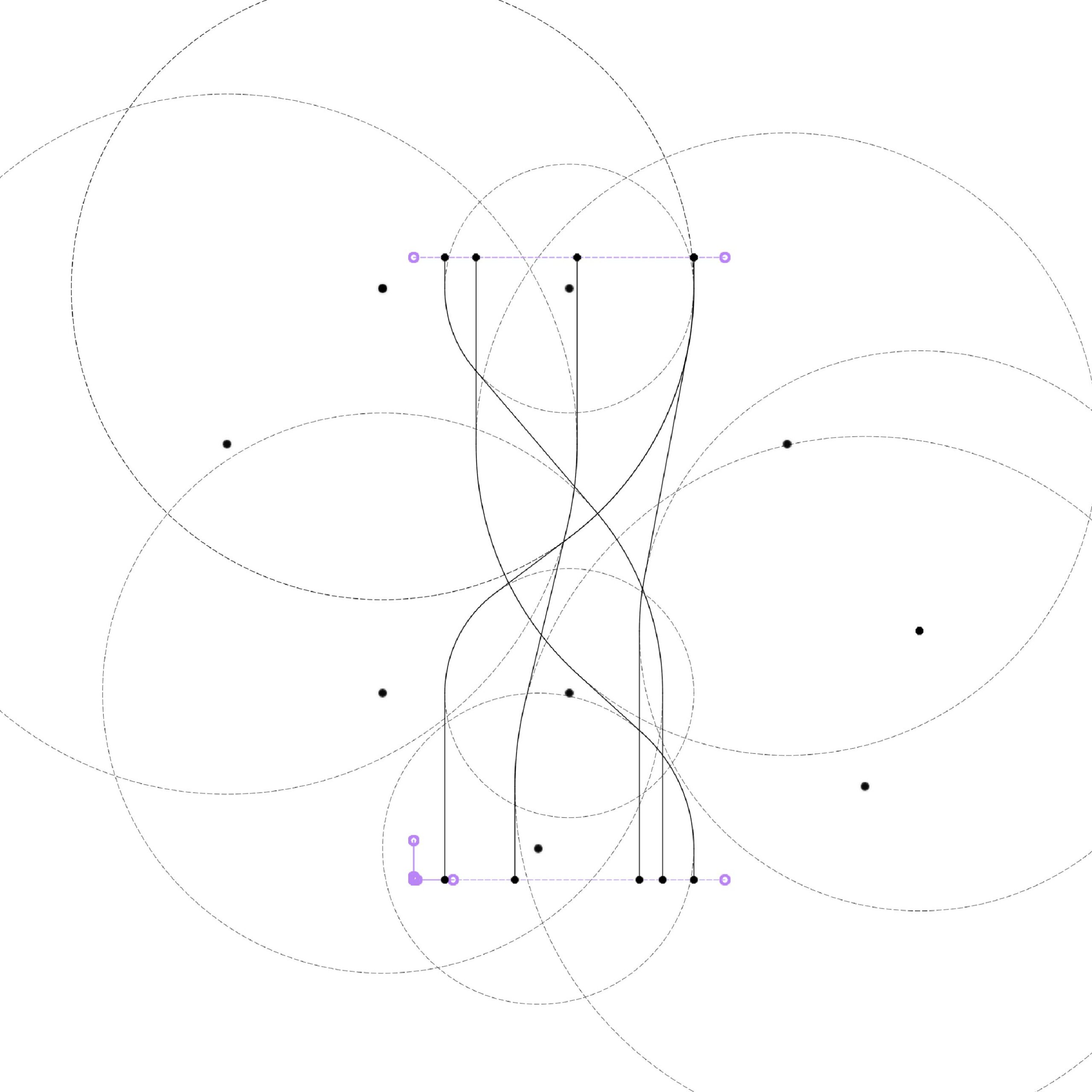
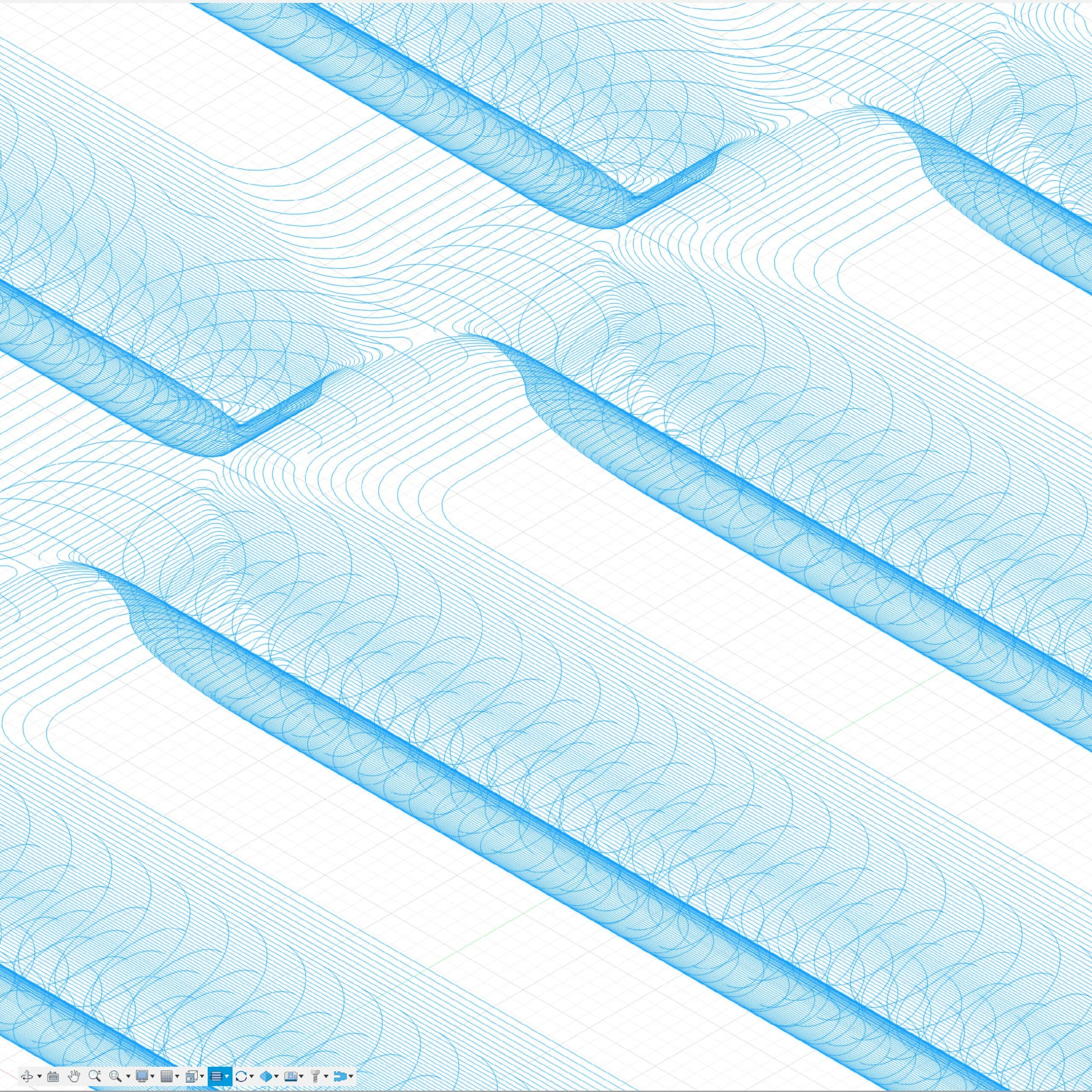
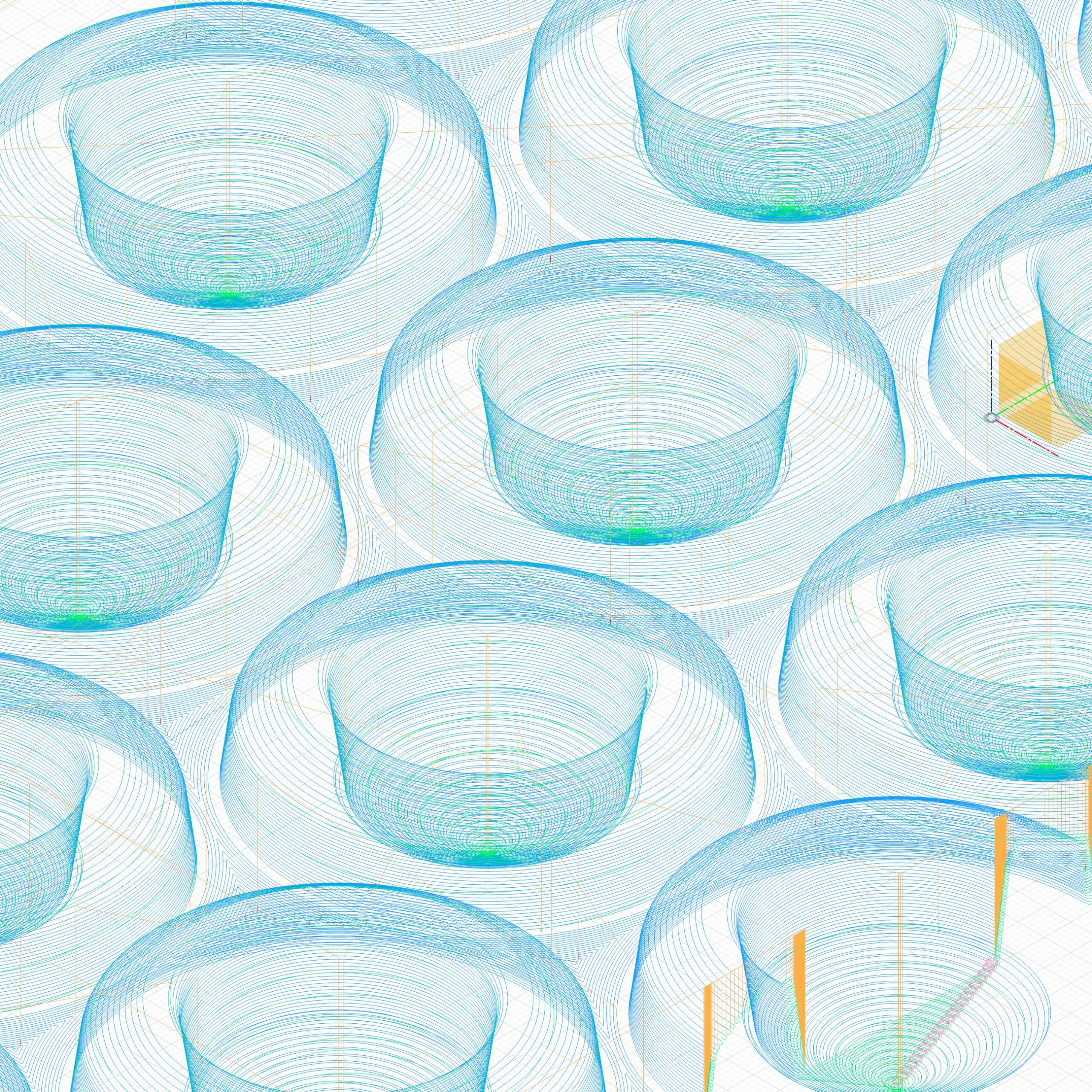
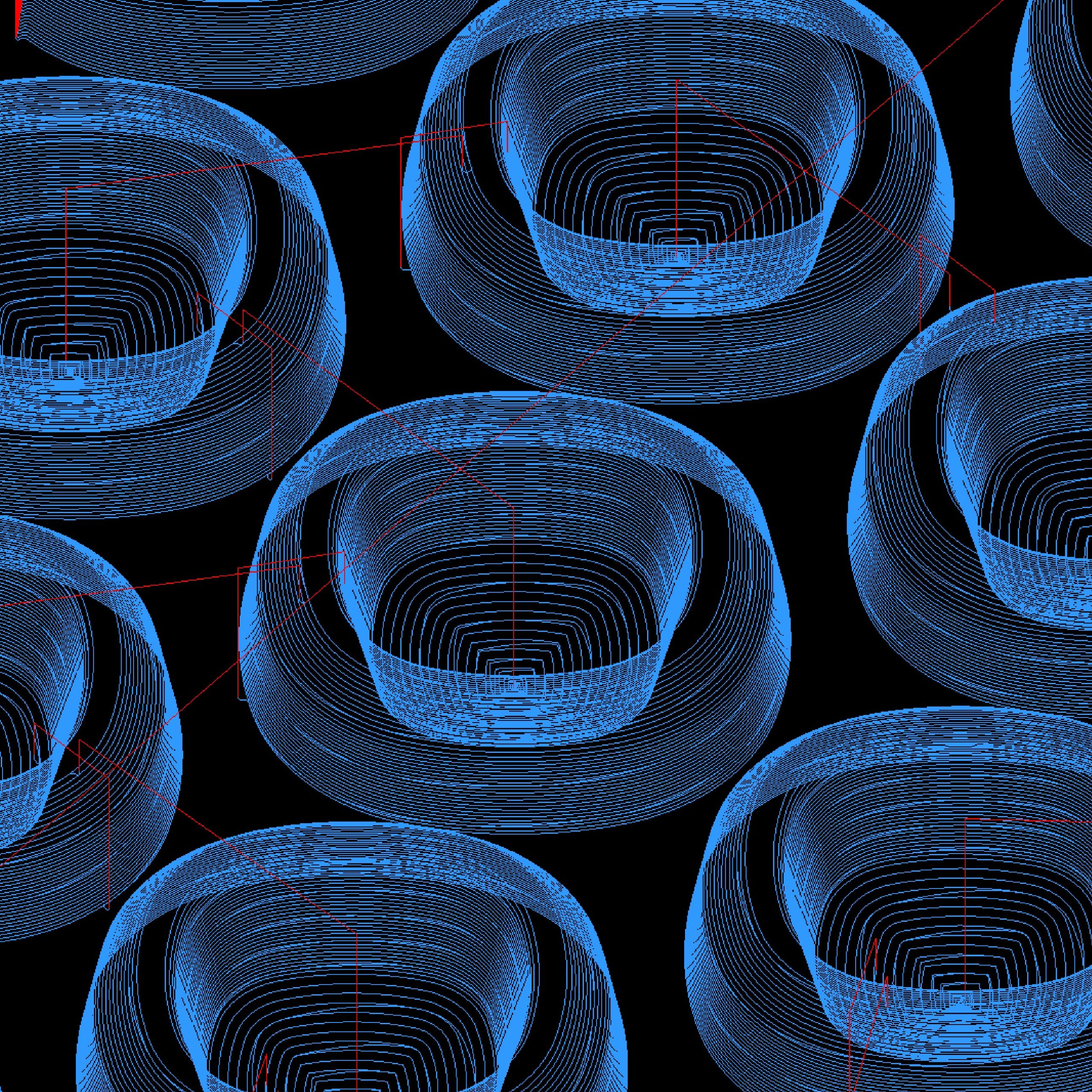
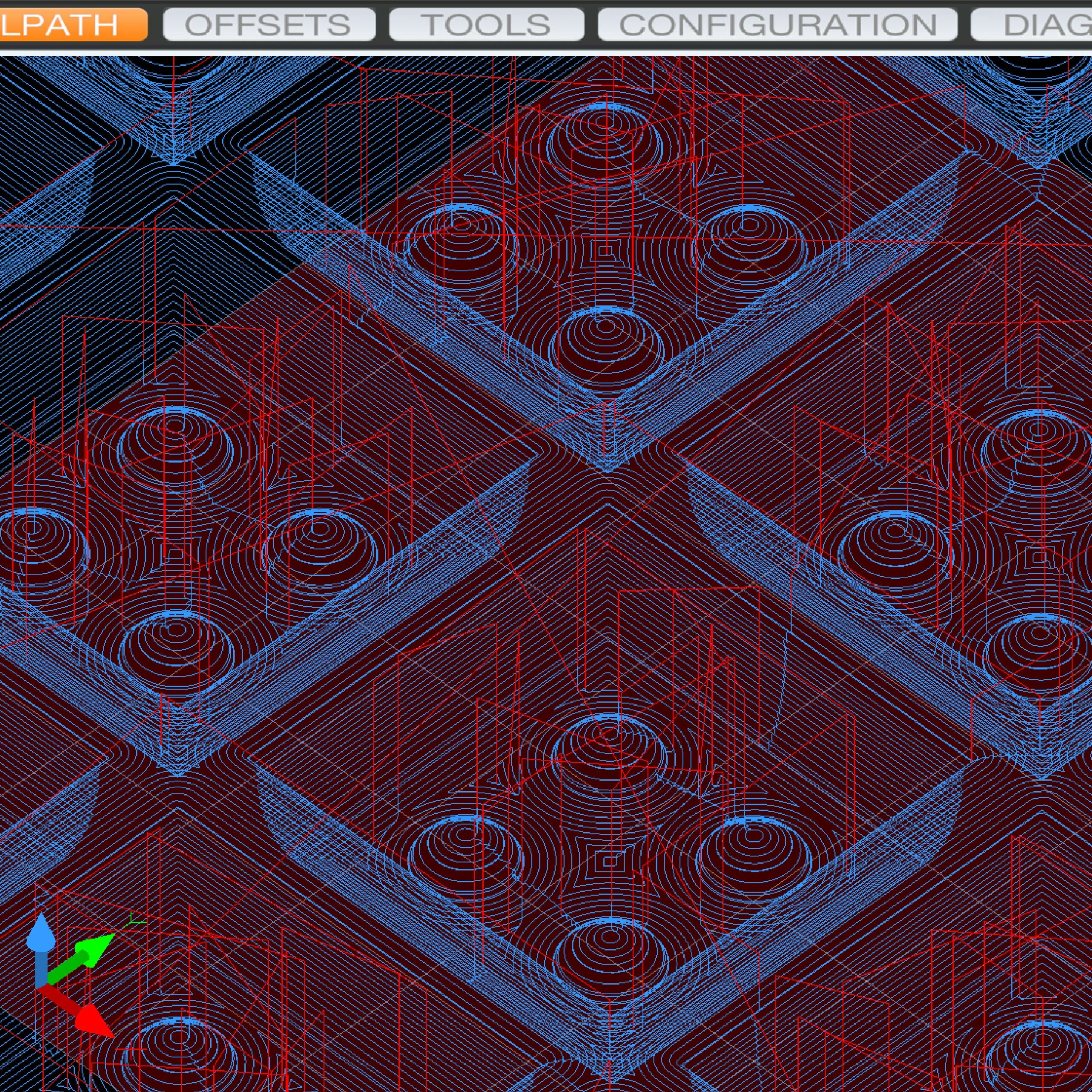
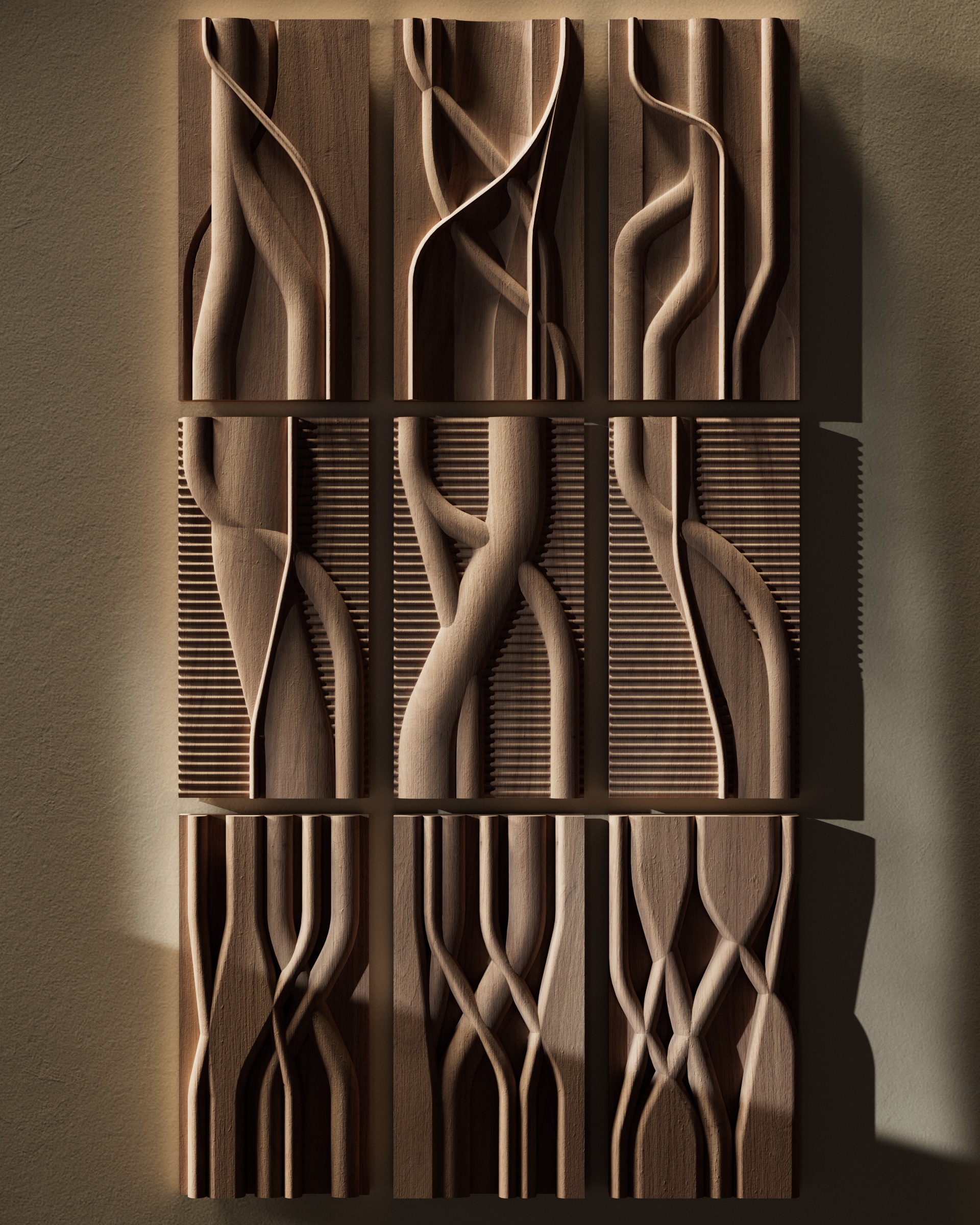
5. Paths Series
These panels consider the three dimensional condition implied by paintings by our friend T. Kelly Wilson. Where Kelly uses color, width, and a precise set of rules to create composition, space, and relationships in his pictures, these mahogany toolpath panels use cut, joined, and intersecting elliptical sections.
